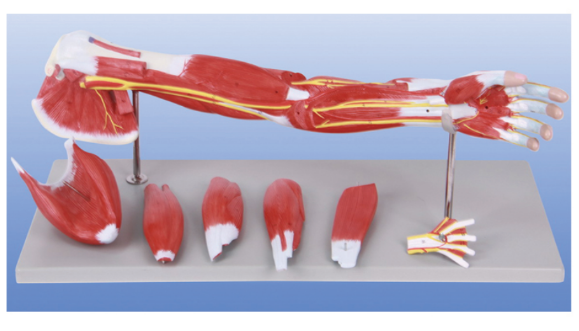

Article tag: Upper limb muscle anatomy model| human muscle anatomy model|
The anatomical model of the upper limb muscle, this seemingly simple teaching aid, is actually much more than that. It is not only an important tool in medical education, sports science and fitness training, but also a bridge connecting...
The anatomical model of the upper limb muscle, this seemingly simple teaching aid, is actually much more than that. It is not only an important tool in medical education, sports science and fitness training, but also a bridge connecting theory and practice and promoting knowledge deepening.
In medical education, with its intuitive and three-dimensional display, it helps students to bridge the gap between abstract concepts and concrete objects. Students can intuitively understand the form, structure, function and interrelationship of upper limb muscles by touching and observing models, thus deepening their understanding of human anatomy. This teaching method not only improves the students' learning interest, but also significantly improves the learning effect, and lays a solid foundation for future clinical practice.
It is an indispensable partner for sports science and fitness training. It can help coaches and athletes more accurately identify muscle groups and understand their role and contribution in sports, so as to develop a more scientific and personalized training plan. With the help of the model, the training can stimulate the target muscle group more accurately, improve the training effect, and reduce the sports injury caused by wrong movements or overtraining.

More importantly, it has stimulated people's in-depth exploration of the structure and function of the human body. It is not only a static display tool, but also a source of inspiration and innovation. Through the observation and study of the model, people can more deeply understand the working principle of the upper limb muscle, the movement law and its role in the overall function of the human body, and provide new ideas and methods for the development of medicine, sports science and other fields.
In summary, the upper limb muscle anatomy model goes far beyond its single function as a teaching aid. It is an important tool in medical education, sports science, fitness training and rehabilitation medicine, a bridge between theory and practice, and a source of innovation to promote the development of related fields.